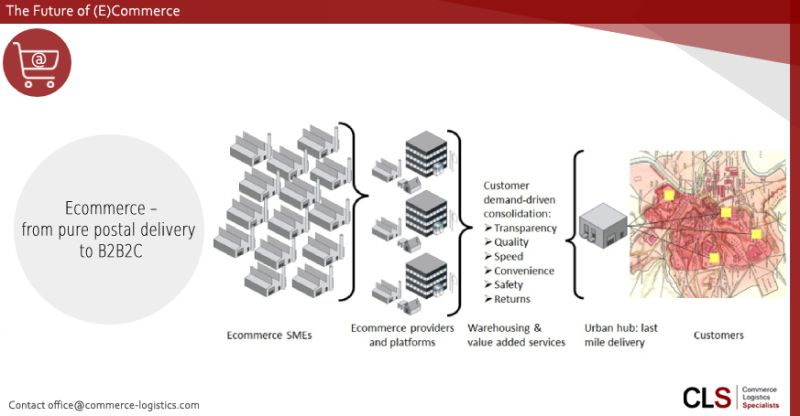CARGO to Mail – B2B2C leads to delivery chain management

One #impact of the COVID-19 #pandemic with its #mobility restrictions and #safety concerns was increased #demand for warehousing space, especially for #B2C supplies (i.e., #ecommerce).
Over the past 20 years, the cross-border and trans-continental warehousing of #consumergoods has gradually developed into a new form of #foreigntrade infrastructure, one that integrates basic functions and value-added services such as return and #exchange, circulation processing, #distribution, and financing. While this evolution was initially fuelled by #digitalization in cross-border trade logistics, it has accelerated following #COVID-19 and other supply chain-related #challenges.
The growth of #warehousing as foreign trade #infrastructure is a #development which started in the European and American markets but is rapidly spreading on a global scale, particularly in Southeast Asia and South America. Increasingly, the layout of warehouse networks is globalized and based on harmonised standards. In just over a year, from 2019 to 2020, the average growth rate of the number of overseas warehouses in major countries such as the United States, Britain, Germany, Japan, and Australia was as high as 72.4%.
Around the world, economic zones have been established by domestic enterprises (and their international subsidiaries) to provide warehouse services for import and export commodities, including storage, delivery, #distribution, processing, and other value-added services. These zones are used to deliver goods to the destination country in advance, localizing cross-border #trade and improving the consumer #shoppingexperience. This enhances the local #competitiveness of cross-border sellers in export destination markets.
Experts stated recently that the conversion rate of merchandise linked to intercontinental warehouse infrastructures is four times that of directly-issued #merchandise. Sales of goods through the international warehouse infrastructure account for more than 50% of total volumes, compared to 10% for retail stocks.
As ecommerce platforms tilt traffic to locally, regionally, and globally interconnected warehouse infrastructures, digitalization and harmonization are creating #globalstandards to ensure:
-reduced operating costs and improved #servicequality;
-greater #transparency and therefore trust among suppliers, consumers, ecommerce platforms and their #logistics providers;
-efficient warehouse operations, providing jobs, and promoting #sustainable social development;
–#globaltrade facilitation, ensuring the reliability and #security of supply chains, by inclusion of SMEs; and
-the #integration of delivery services, improving the efficiency of customs clearance of goods, while improving delivery times and costs.
CARGO to Mail emerges as decisive #gamechanger responding to higher #deliveryrates, #supplychain #disruptions and ongoing digitalisation.
Click here for the LinkedIn-Article.

Walter Trezek
Document Exchange Network GmbH

